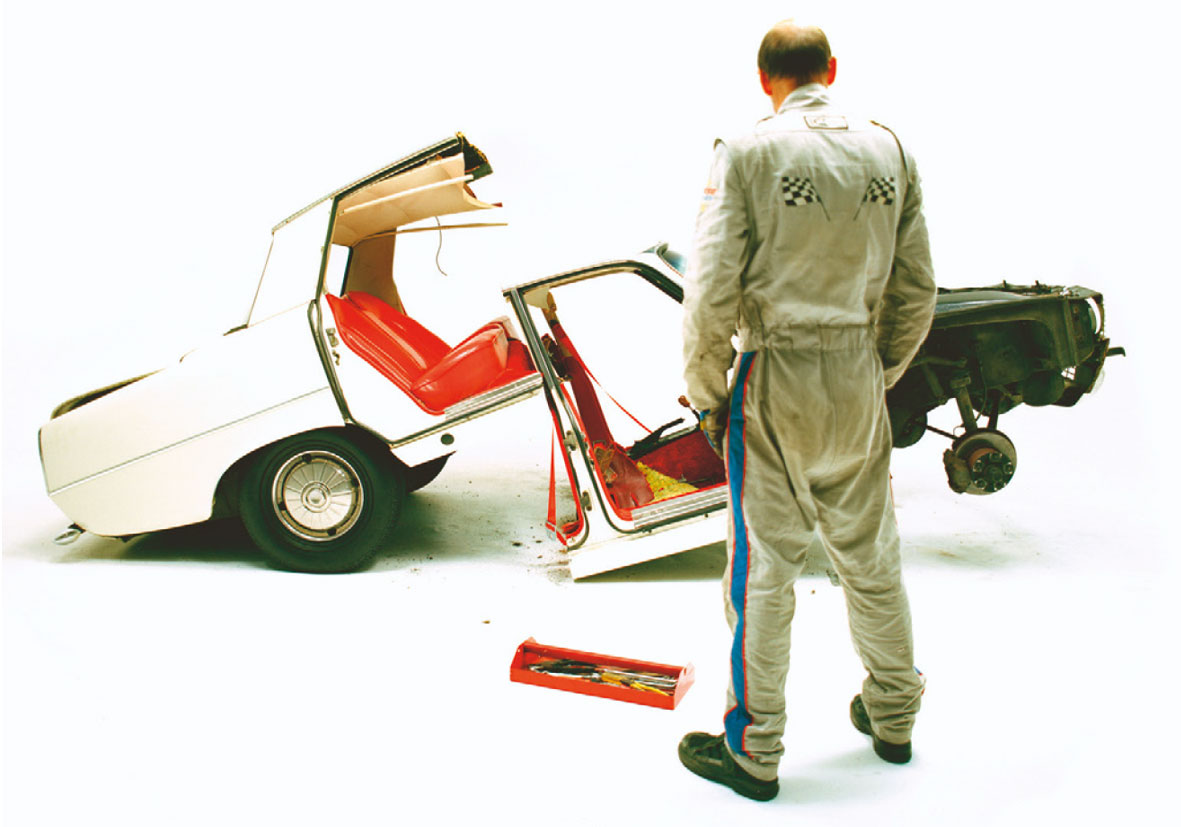
Post-haste
By Arts Writer, Victoria Hynes
As regular travellers, artistic duo Claire Healy and Sean Cordeiro were all set to undertake a residency in Niigata, Japan, in 2020. Instead, like everyone affected by this modern-day pandemic, the year found them at home learning the Japanese art of kite painting.
The pair contemplate the lessons learnt over the past two years in their latest exhibition, ‘Posthaste’, at the Blue Mountains City Art Gallery in Katoomba, New South Wales. Curated by Rilka Oakley, it showcases their artwork over the past ten years, addressing themes of technological obsolescence, global mobility, and the effects of mass consumption on the environment; and what happens when unseen forces arrest our desire for progress and speed.
The show features an extraordinary array of assemblages, sculptures, installations, photography, video and sound works. Their assemblages come from broken and worn machine parts sourced from obsolete vehicles of speed and travel – helicopter fuselage doors, aircraft panels, cut out pieces from a Cessna airplane, a Piper Aircraft wing or segregated parts of an entire Honda vehicle. Other works are composed from mass-produced everyday items – such as LEGO pieces and IKEA shelves – that have been repurposed into handcrafted artworks.
In many of Healy and Cordeiro’s artworks they investigate reversing technology – disused plane panels are transformed into painted kites. Both are objects of flight, but one involves complex technology and is used solely as a means of travel, whereas the other is a simple object tethered to the ground and created exclusively for idleness and play. The couple refers to this series, created in 2020, as their personal response to the COVID era, where lockdown resulted in a forced stasis, with ample free time to daydream and reflect. They had planned to attend a popular kite flying festival in the Japanese town of Shirone, so instead hired videographers to record footage of the
festival to include in the exhibition.
In We Hunt Mammoth (2015), a complete car has been disassembled into 121 parts and carefully wrapped and packaged individually in jute and bamboo using traditional Japanese handcrafted methods. In these artists’ hands, man-made and mass-produced items are transfigured into individual precious objects.
One of the most striking artworks on display is Par Avion from 2011 and now part of the Museum of Contemporary Art Australia’s art collection. An old Cessna 172 airplane from a Queensland scrapyard has been divided up into 70 segments, with each piece then airmailed to galleries all over the world where it is reassembled on a wall to reclaim its appearance as a travelling aircraft. This remarkable assemblage, covered in gaffa tape and postage stamps, has been transformed from a forceful flying machine into a static piece of art.
A new artwork titled Mayday (2021) involves a disused aircraft wing painted and festooned with stickers that turns out to be a cry for help. Other collaborative projects created this year involve local high school kids – with the students creating artworks out of their dead smartphones or spray painting an entire plane wing with fluoro graffiti, Revolting Youth.
As NSW begins a roadmap for reopening, ‘Post-haste’ presents a cautionary warning for the future – that our desire for progress is damaging our personal and planetary health, perhaps even more than a global pandemic. As such, it is the perfect exhibition for the gallery to launch directly post-lockdown.




Blue Mountains City Art Gallery
Until 16 January, 2022
New South Wales
Victoria Hynes is a Sydney-based arts writer and editor.
Original Article here